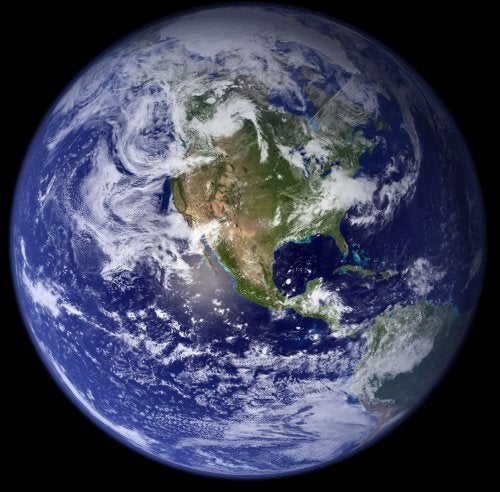Rotation: It takes only 23 hours, 56 minutes (1 day) for Earth to spin on its axis one time relative to the stars.
Surface: From space, Earth looks like the blue water world it is. About 70 percent of Earth’s surface is covered with water, and 97 percent of all that water is in the salty oceans. Only 3 percent of Earth’s water is freshwater — the water we drink.
Earth is covered with mountains, volcanoes, lakes, rivers, and oceans. Most of the surface material is made of rocks — high in silica, iron, and magnesium.
Atmosphere: Earth’s atmosphere is a mixture of gasses that becomes thinner as we move away from the planet toward space. Most of the atmosphere is nitrogen (78 percent), oxygen (21 percent), argon, and other gases (1 percent).
Some of the oxygen in Earth’s atmosphere has changed over time to form ozone. Earth’s high ozone layer filters out the Sun’s harmful ultraviolet rays, protecting the living beings on the surface. Ozone at ground level, however is an irritant to eyes, nose, and throats.
Temperature: Earth’s average temperature is 60° F (15.5° C).
Escape velocity: To escape Earth’s gravity, you have to travel 25,000 miles (40,200 km) per hour.
Other information: The highest point on Earth’s surface is Mount Everest on the border of Nepal and China, at 29,035 feet (8,850 meters).
The deepest known point in Earth’s oceans is over 36,000 feet (11,000 meters) deep in the Marianis Trench in the Pacific Ocean.
You can get more facts on the planets in our solar system in each of the articles linked to below:










